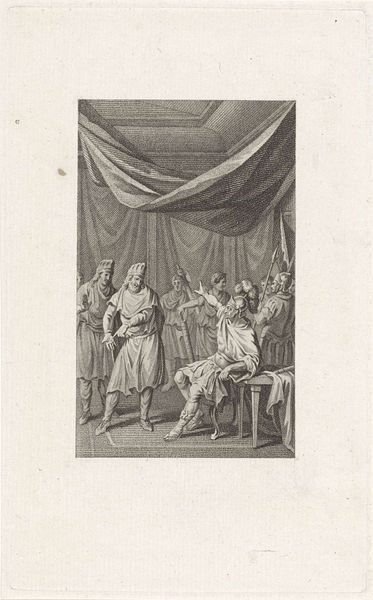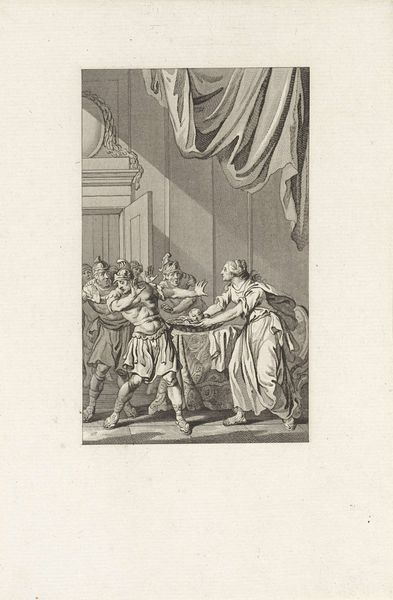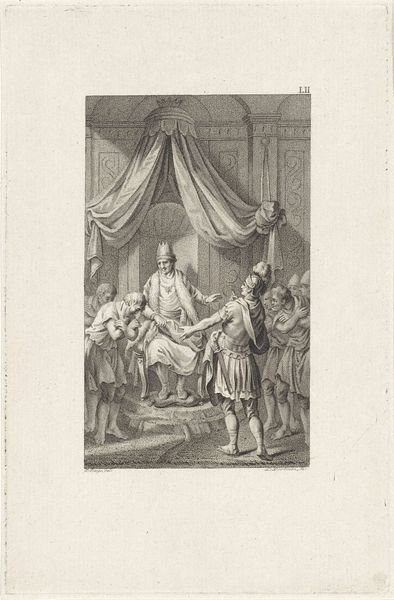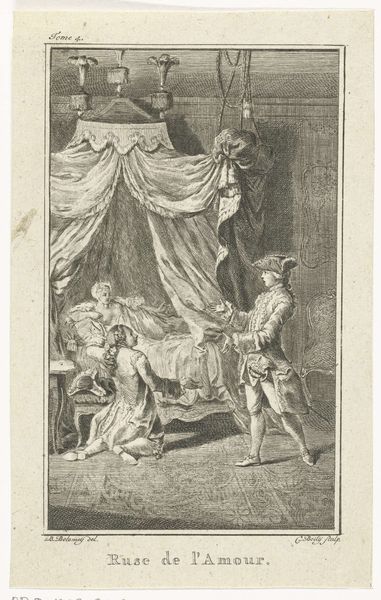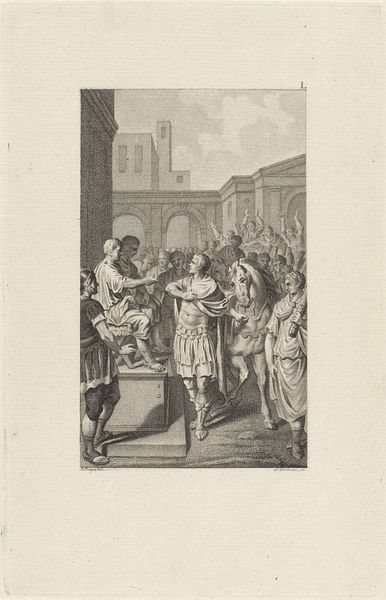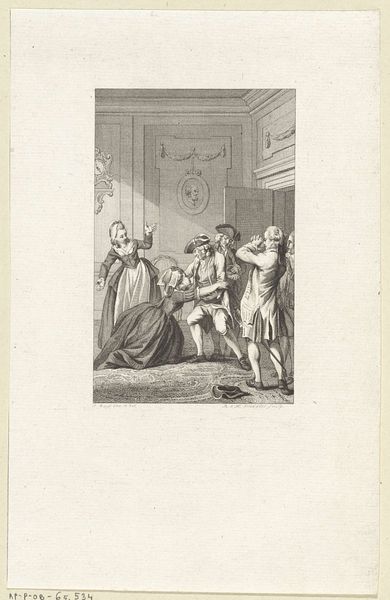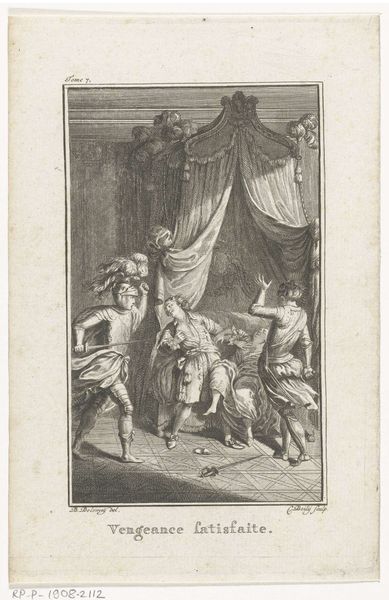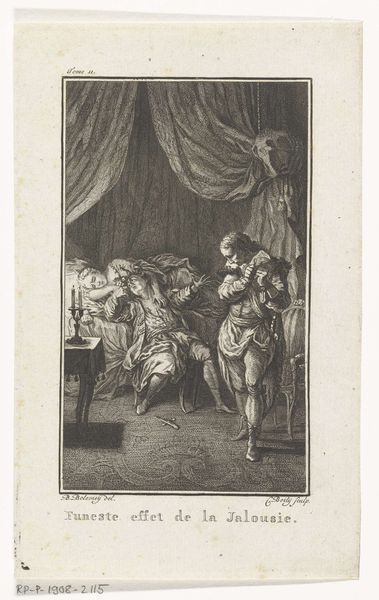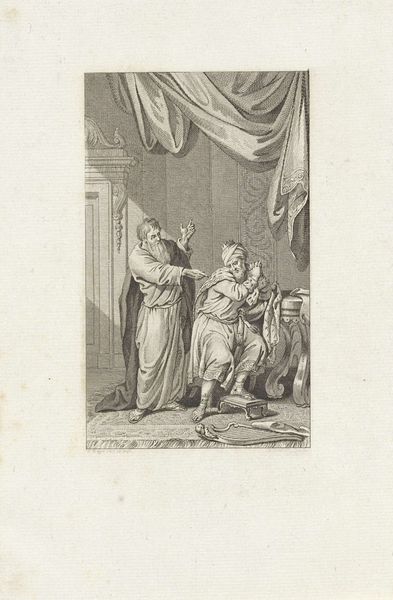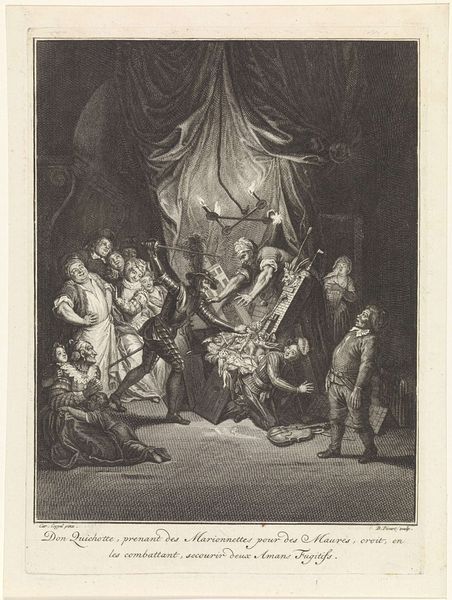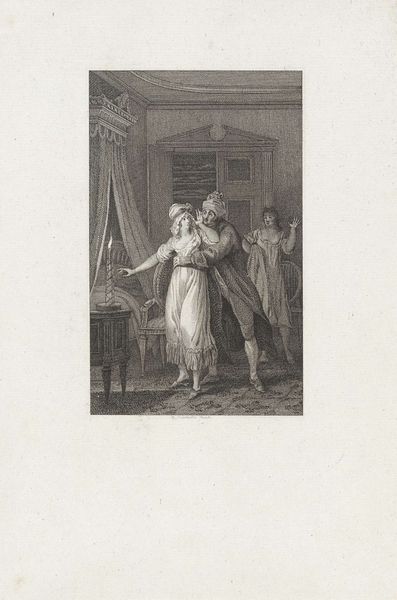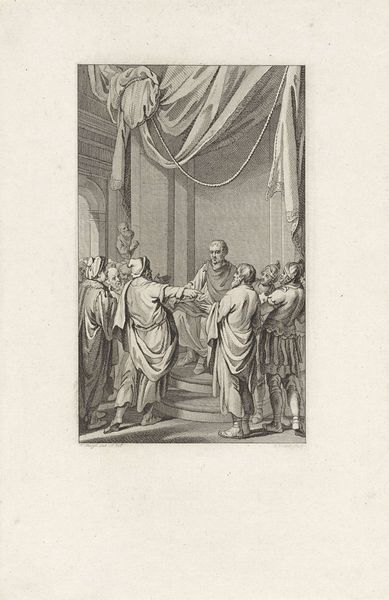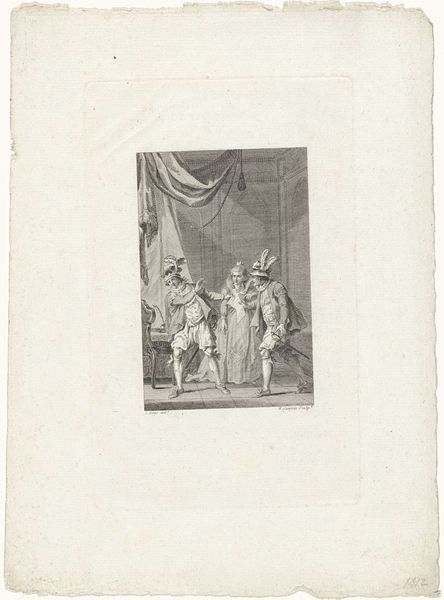
print, engraving
#
neoclacissism
#
narrative-art
# print
#
old engraving style
#
perspective
#
figuration
#
history-painting
#
engraving
Dimensions: height 208 mm, width 134 mm
Copyright: Rijks Museum: Open Domain
Curator: Ludwig Gottlieb Portman created this engraving, "Tigranes Surrenders," in 1799. The work, currently residing here at the Rijksmuseum, showcases the Neoclassical style. Editor: It strikes me as profoundly theatrical, almost stage-managed. There's a stark contrast between the humble posture of Tigranes and the commanding stance of the Roman general, framed against what appears to be an opulent interior. The whole thing feels like a carefully constructed power dynamic. Curator: Precisely! Neoclassicism reveled in such dramatizations, pulling narratives from antiquity to illustrate moral lessons. Surrender here isn't just a physical act; it symbolizes the submission of one culture to another, a very loaded concept within the era of revolutions. Think of the symbolic power in representing an idealised moment of 'Roman' victory and law. Editor: Which can be deeply problematic, depending on whose perspective dominates. Considering the Enlightenment’s own colonial projects, this idealized "Roman" dominance masks layers of oppression and appropriation. Look at the submissive figure of Tigranes, rendered almost abject, losing agency and dignity. What lasting legacies does it reflect in the collective consciousness? Curator: Yet the artist employs specific iconographic cues. The crown slightly askew, the kneeling posture... These images convey specific emotions across centuries of interpretation. Think of the continuity of symbols used to depict a leader bowing to someone of more powerful and "ideal" position, going back to the Byzantines, Romans, even ancient Egyptians! Editor: I recognize that these symbols recur; however, they are never neutral. When deployed here, it entrenches asymmetrical power relationships and the ongoing normalisation of the conquered status and position of certain people or groups, so while visually 'consistent,' it reflects historical contingency. And the emotional toll, for that era and ever since? The symbolic act resonates for decades or even centuries. Curator: Well, Portman's piece really holds a mirror to those persistent and often troubling visual stories in human history. We've seen such a continuity in patterns repeated in depicting victory and loss. Editor: Absolutely. And interrogating these embedded images reveals as much about our present as about any idealized past that we continue to project in visual representations. Thank you.
Comments
No comments
Be the first to comment and join the conversation on the ultimate creative platform.
